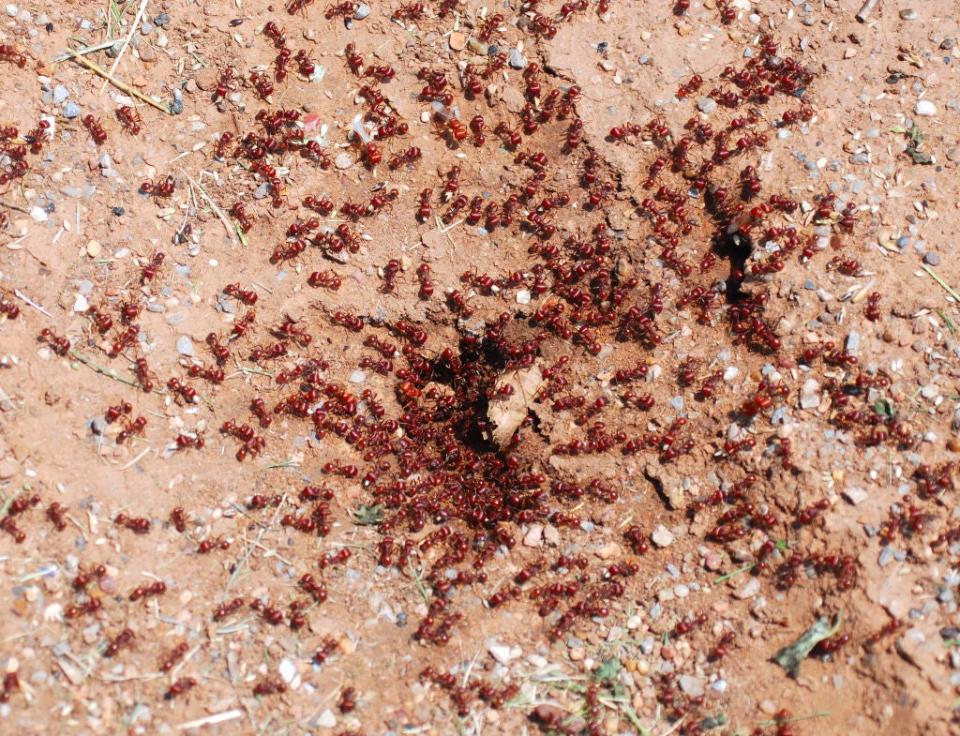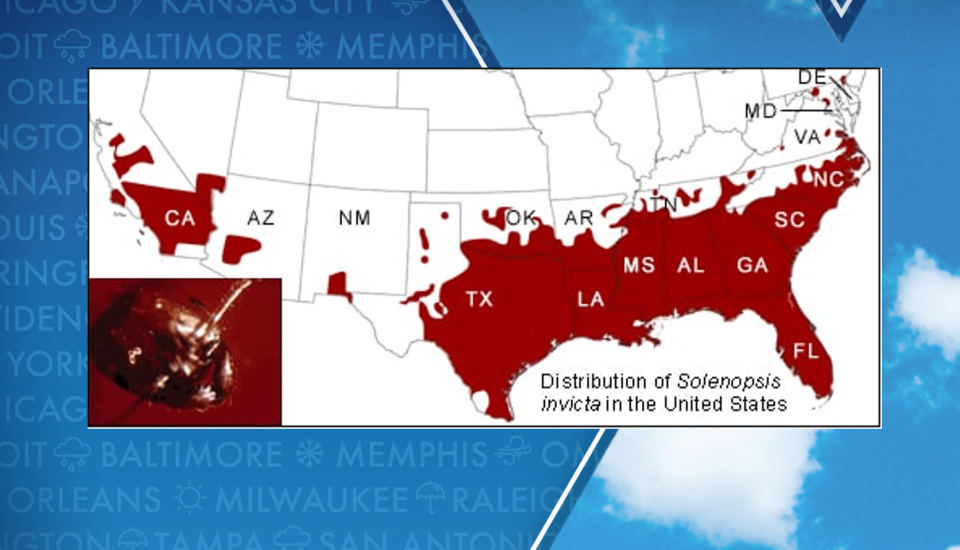Researchers believe there are benefits to studying widely unpopular red ants

No other species of insect carries as many negative connotations as red ants, but some researchers believe that observations of these pests may lead to advancements in material engineering.
A study led by researchers at Binghamton University and the University of Colorado examined the insects' ability to bind together to survive heavy rainfall events.
Findings regarding these non-native species were published in the Proceedings of the National Academy of Sciences, and the results have the potential to lead to breakthroughs in material science.
Researchers discovered that the bond between fire ants grew stronger when force was applied to what is known as a colony.
During heavy rainfall events, it is common to see large groups floating down creeks and floodwaters, resembling buoyant rafts.
"Living systems achieve feats beyond the capabilities of our current materials," Rob Wagner, a professor at Binghamton University, said in a statement. "Understanding the mechanisms behind these natural adaptations can revolutionize material engineering."
GIANT BUG FOUND AT AN ARKANSAS WALMART IDENTIFIED AS A JURASSIC-ERA INSECT

Wagner hopes lessons learned through his experiments will one day enhance the makeup of implants, adhesives, robotic components and other composites.
"A natural progression of this work is to determine how we can induce interactions between these ribbons or other soft building blocks to ‘catch’ under load, similar to the behavior of fire ants and certain biomolecular interactions," Wagner stated.
According to experts at Texas A&M, black fire ants were accidentally imported into the U.S. in 1918, and it wasn’t until the 1930s that red fire ants were introduced.
The red ant population has since exploded, and the U.S. Department of Health & Human Services believes there are five times more ants per acre in the U.S. than in their native South America.
They are currently found in dozens of southern states, but experts warn that the population is still spreading and could one day reach as far north as the Pacific Northwest.
The ants are notorious for their bites and venomous sting, which can trigger allergic reactions in some cases.

A WALK OF PAIN: FIRE ANTS LURKING IN IAN’S FLOODWATERS
Reflecting on his research, Wagner did not allude to how many times he was bitten by the ants but shared a valuable lesson after seeing some crawling through his car.
"One thing I learned is that in a five-gallon bucket, there’s plenty of oxygen for the ants. You do not need to poke holes in the top," Wagner chuckled.
Original article source: Researchers believe there are benefits to studying widely unpopular red ants

